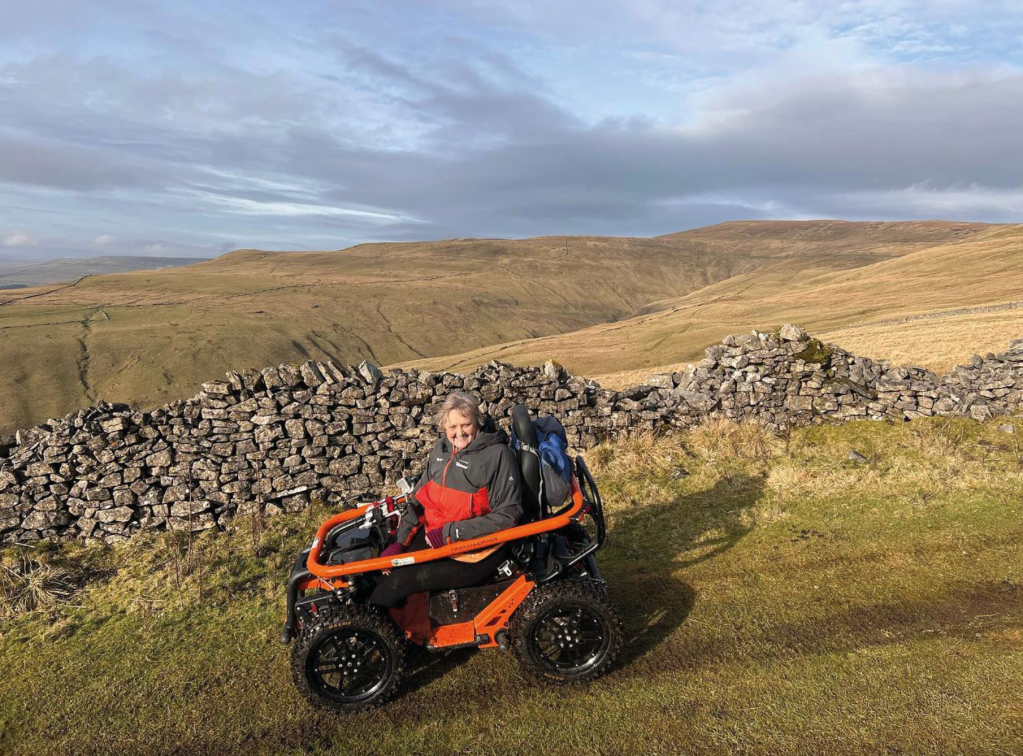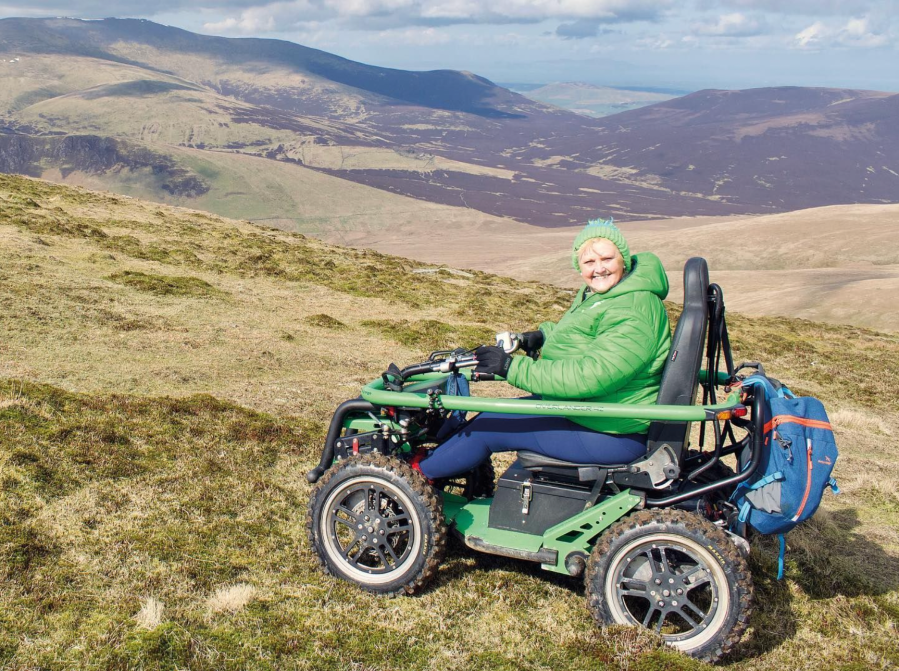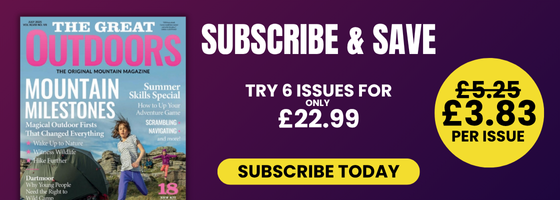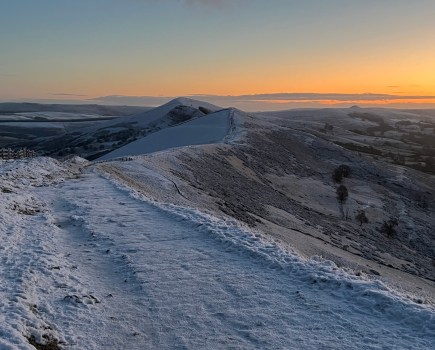We don’t need to compromise the rugged beauty of our high places to allow the 11 million people in England who face mobility challenges to enjoy the outdoors, argues Debbie North.
In today’s fast-paced world, where digital screens dominate our daily lives, the importance of reconnecting with nature cannot be overstated. The health and social benefits of spending time outdoors are well-documented and increasingly recognised as essential components of a balanced, fulfilling life. Public open spaces serve as vital hubs where communities gather, where people forge connections with the natural world, and where individuals find solace, inspiration, and rejuvenation.
Main image: Debbie in her element | Credit: Debbie North
For many, me included, nature is not just a backdrop but a sanctuary—a place that awakens the soul and provides a refuge for reflection and relaxation. It’s where I find peace and inspiration, akin to finding solace in a church. However, accessing these natural sanctuaries isn’t always easy. A recent survey conducted by YouGov for the Ramblers revealed a significant barrier: 25% of individuals are deterred from using path networks due to physical obstacles such as stiles, steps, or gates. This issue is compounded by the fact that approximately 11 million people in England alone face mobility challenges that restrict their ability to fully enjoy public rights of way.
The consequence of this lack of accessibility is profound. Millions are deprived of the transformative benefits that nature offers—from reducing stress and anxiety to improving overall mental health. To address this disparity, innovative solutions are crucial. While all-terrain wheelchairs exist and are a step in the right direction, more must be done to make these devices accessible for borrowing. Access the Dales, a charity that is based in the Yorkshire Dales and which has now expanded into the Forest of Bowland National Landscapes, exemplifies this effort by offering a variety of wheelchair types at different locations. This approach ensures that individuals with diverse mobility needs can explore and enjoy the great outdoors with greater independence and freedom.

Debbie with a group in Malham. Credit: Debbie North
It’s essential to recognise that improving accessibility does not equate to sterilising the landscape with tarmac paths. Rather, it involves thoughtfully integrating facilities like all-terrain wheelchairs into natural environments, thereby enhancing outdoor experiences without compromising the rugged beauty that defines these landscapes. By making these resources available at various locations, we can broaden access and inclusivity, ensuring that everyone can connect with nature on their terms.
The call for enhanced accessibility in National Parks and other natural landscapes, as advocated by Julian Glover in his 2019 review, is pivotal. Glover highlights the immense desire among individuals with disabilities to access and enjoy these spaces, emphasising the need for accessible, stile-free paths and wheelchair-friendly routes. His recommendations underscore a balanced approach that respects both the integrity of the natural environment and the diverse needs of visitors.
However, misconceptions abound regarding accessibility efforts. Some mistakenly interpret calls for “hard surface, stile-free paths” as proposals to pave over pristine areas or install amenities like chairlifts on mountain peaks. Such misunderstandings underscore the importance of informed dialogue and realistic expectations in accessibility initiatives. Most importantly, disabled individuals themselves stress the importance of maintaining the natural character of these landscapes while ensuring that essential man-made features—such as gates, paths, and seating—are designed inclusively.
Addressing barriers to outdoor access involves tackling three primary types of obstacles: psychosocial, physical, and organisational. Psychosocial barriers, such as safety concerns or lack of confidence, can be mitigated through accurate information and community engagement. Physical barriers, such as steps or steep gradients, require systematic reviews and targeted improvements to enhance accessibility. Organisational barriers, such as limited activity programs or inadequate facilities, necessitate policy changes and collaborative efforts to improve services and infrastructure.

Exploring the fells above Kettlewell in the Dales. Credit: Debbie North
As technology continues to evolve, so too will the availability and effectiveness of all-terrain wheelchairs and other accessibility aids. These advancements are pivotal in realising a vision where everyone—regardless of physical ability—can benefit from and enjoy the wonders of the natural world. Organisations like The Ramblers play a crucial role in providing guidance and resources for navigating public rights of way, ensuring that information is accessible and empowering individuals to make informed choices about their outdoor experiences.
In conclusion, promoting outdoor accessibility isn’t just about installing ramps or widening paths; it’s about fostering a culture of inclusion and ensuring that everyone has equitable access to the transformative power of nature. By working collaboratively across sectors and communities, we can break down barriers, enhance accessibility, and create a future where public open spaces truly serve as centres of community life and sources of well-being for all.









